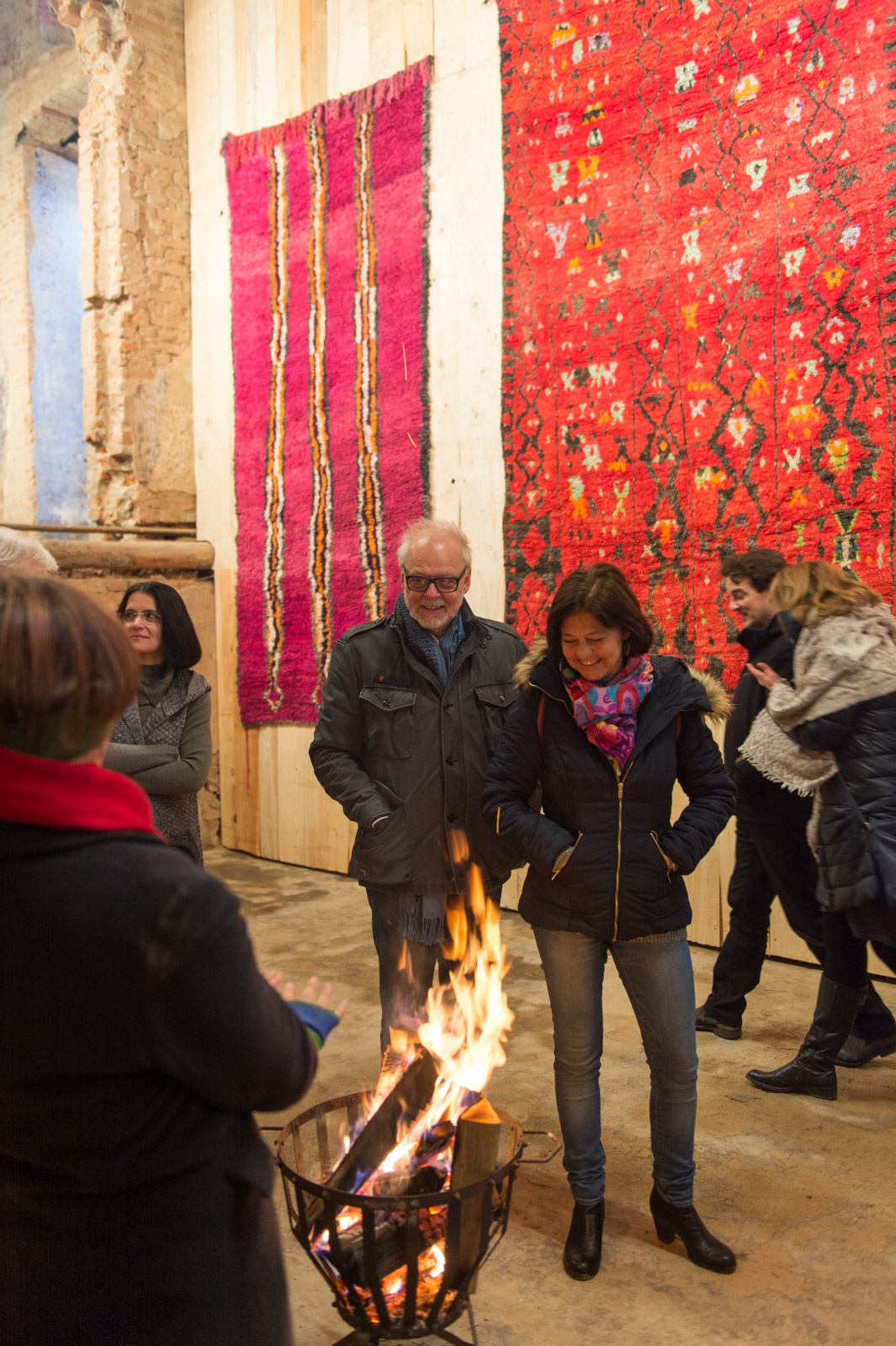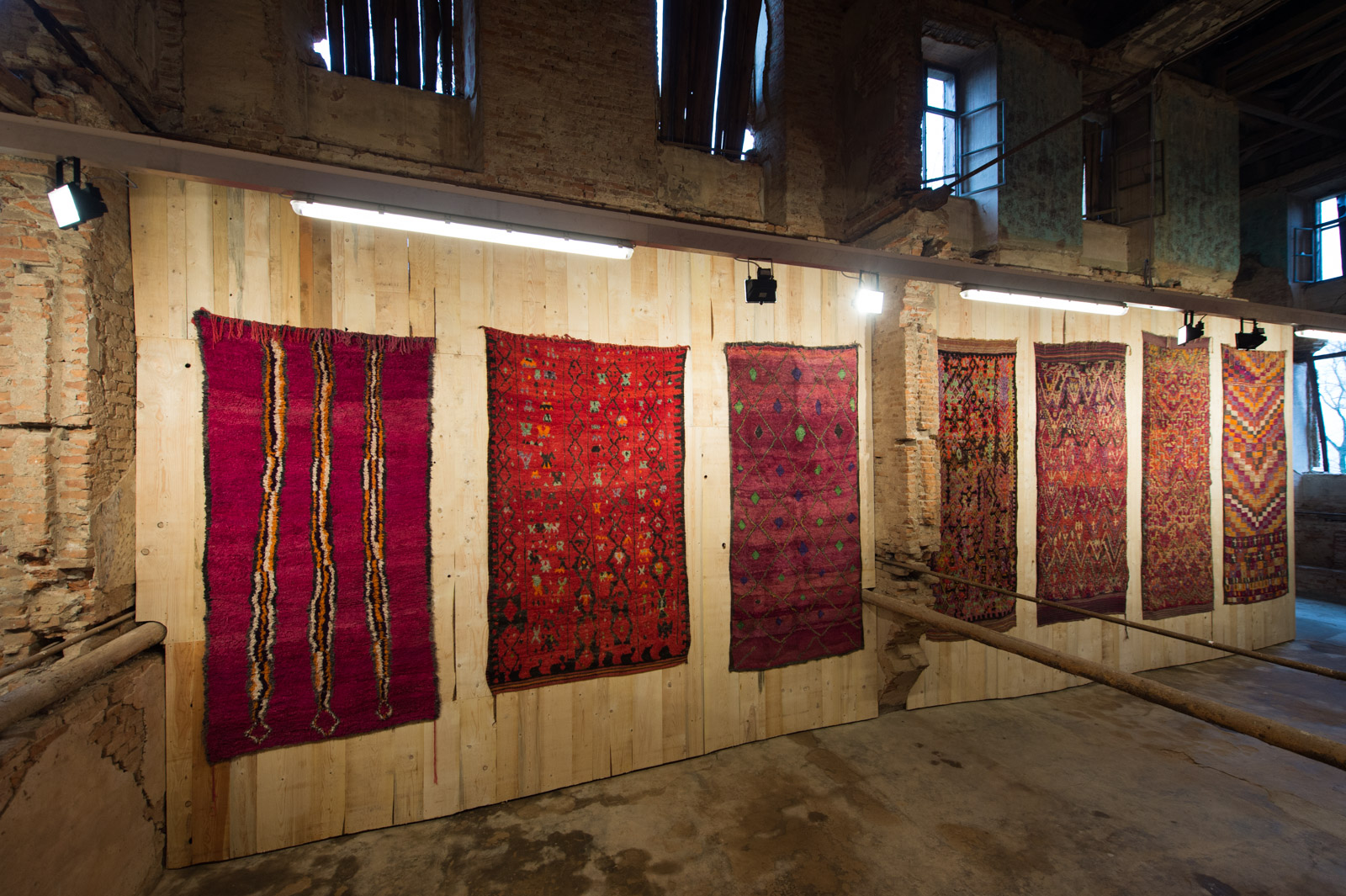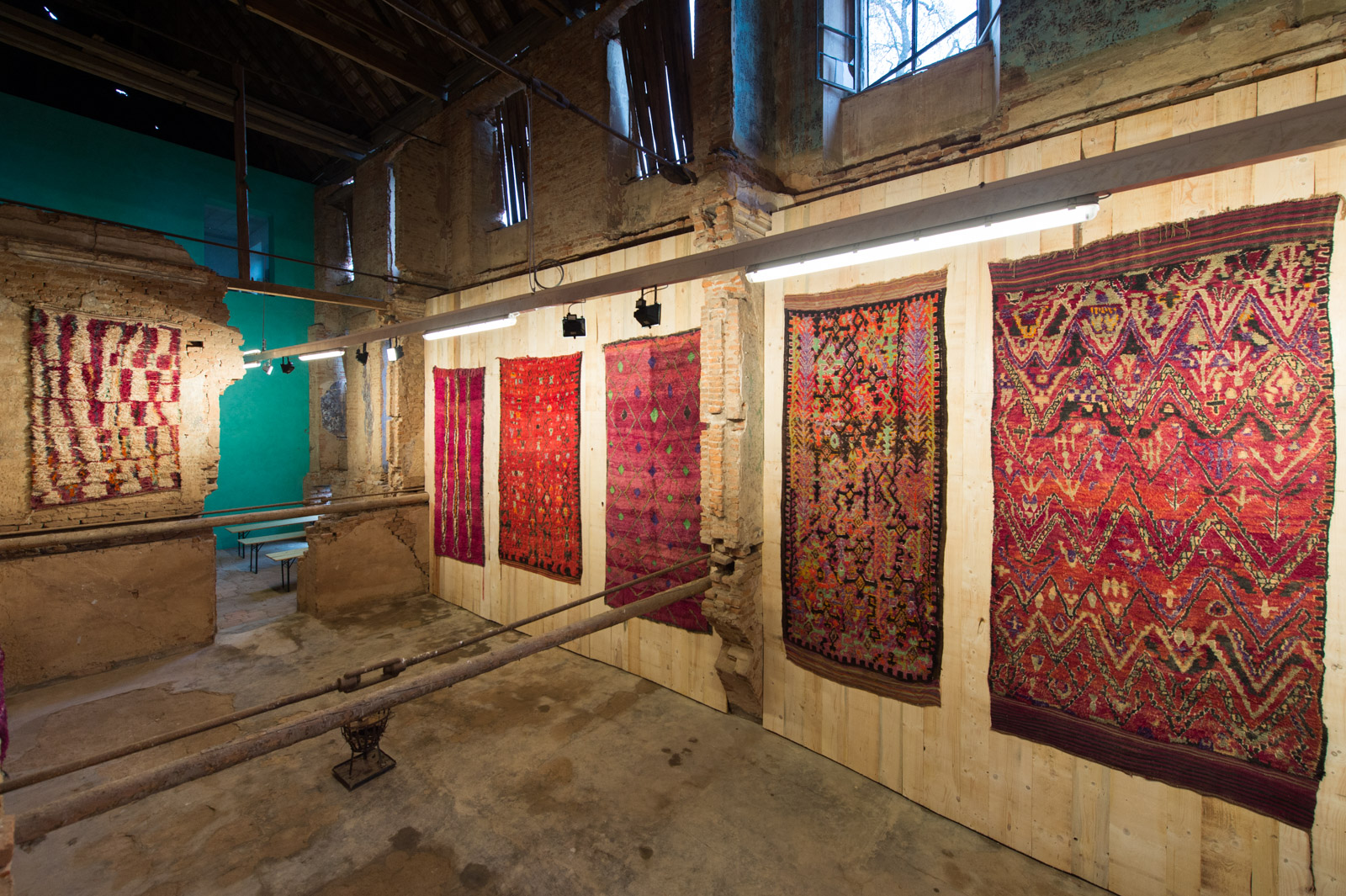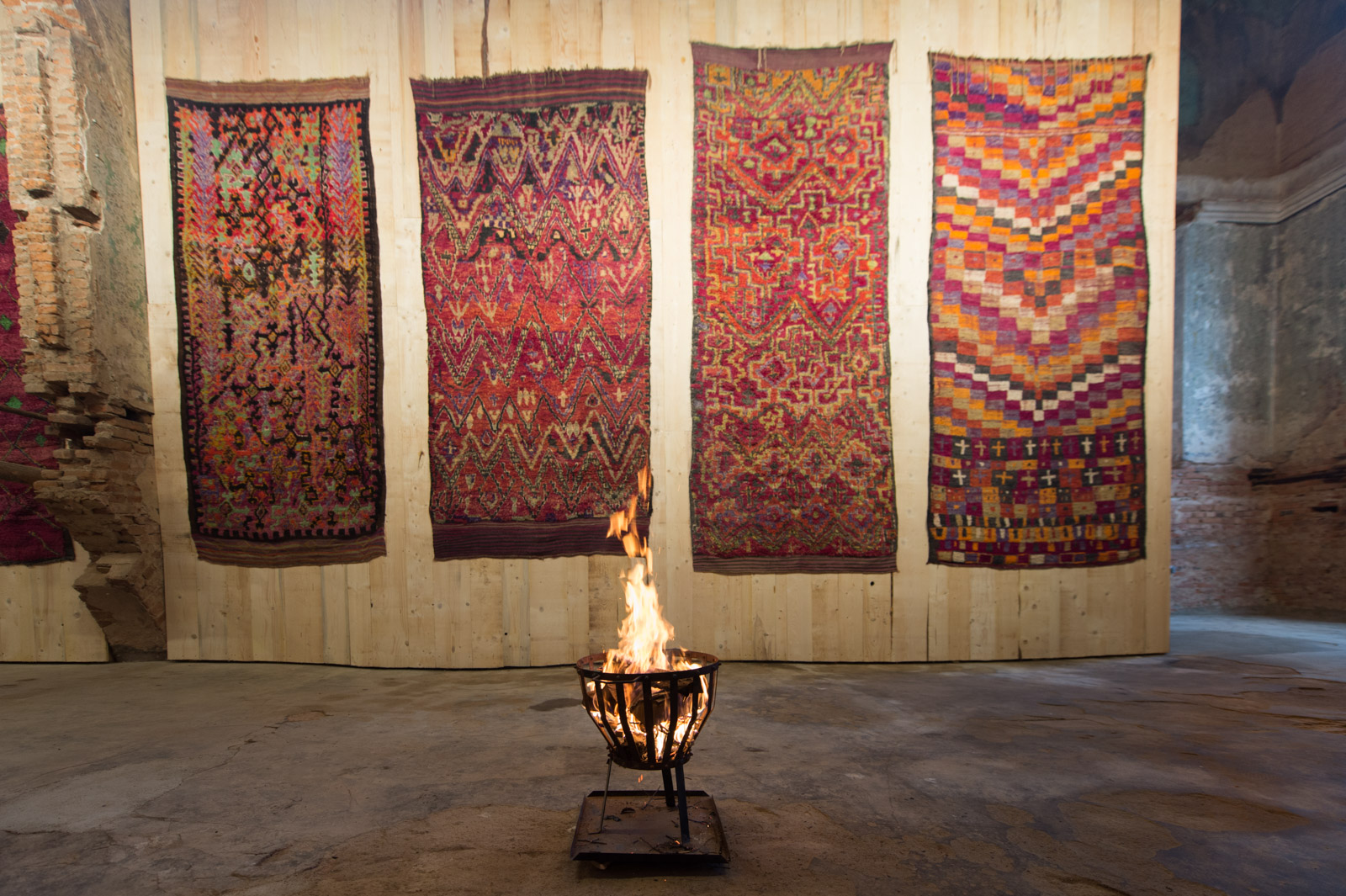ONE NIGHT EXHIBITION TO MARK THE 5TH ANNIVERSARY OF REINISCH CONTEMPORARY
Game goulash. Dress for the cold.
Saturday, 11 February 2017, 4 pm, Kalsdorf Castle, near Ilz, Austria
Route from Graz
Route from Vienna
It’s a similar story with Morocco’s Berber rugs. Here, too, one encounters high-pile, freely ornamented textiles of nomadic origin. In a second exhibition, held inside the ruins of Kalsdorf Castle for one evening only, Reinisch Contemporary presents pieces by the eastern Moroccan Ait Bou Ichaouen tribe, an ethnicity that was practically undiscovered until the 1990s due to its geographical remoteness. Correspondingly, their carpet production – solely intended for domestic use – is remarkable. Their intense colours – such as striking reds and purples – as well as the fur-like compactness of their fabric are a testament to the multi-functionality of these textiles. They are works by nomadic tent-dwellers. As such, they serve as sleeping mats as well as as wall hangings, providing temperature equalisation during the tough, rainy and windy winter months. Their patterns are often very free interpretations of classic carpet ornaments, which date back far into pre-Islamic times. Prehistoric cave paintings, which can be found in the desert areas towards Algeria, must be seen as additional sources of inspiration, as well as elements of contemporary everyday life, such as weapons or equipment, stylised versions of which are integrated into their patterns. Thus, textile products also become means of communication, an attempt at commentary on – or documentation of – the social situation of nomadic society.
This exhibition, which is deliberately shown in an unheated space during winter, intends to heighten the multi-sensual impression of the pieces and conjure original aspects of carpet production for the audience. In the West, carpets are reduced to images as a matter of course and their variety pushed into the background. Yet, not just the rugs’ formal qualities – reduction and abstraction – but also their indeterminateness regarding their usage, correspond to what we expect of contemporary art. As such, rugs are just as much three-dimensional objects of daily use as they are two-dimensional images. Aesthetic value corresponds to functional value.
Günther Holler-Schuster

























